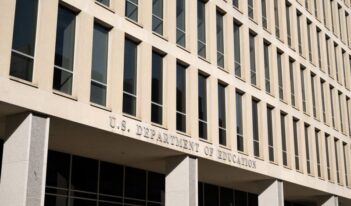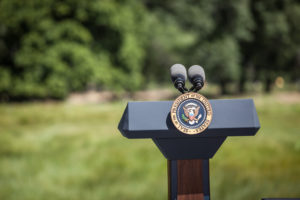
Expanding a White House office could help shrink the whole federal government.
President Donald Trump’s fiscal year 2018 budget proposal includes significant cuts across numerous government agencies and programs, but it calls for an increase in funding for the White House Office of Management and Budget (OMB)—the very agency responsible for developing the proposed budget. Several lawmakers have decried this supposed double standard as the Administration’s betrayal of small-government values, but the reality is that expanding certain parts of government actually can help to shrink the whole.
Under President Trump’s proposal, OMB would receive an 8.6 percent funding increase (up to $103 million, from $95 million) and a staffing increase of 30 employees. Meanwhile, agencies like the U.S. Environmental Protection Agency, the U.S. Department of Labor and the U.S. Department of Education, among others, would face deep cuts.
When OMB Director Mick Mulvaney appeared on Capitol Hill to discuss the Trump Administration’s budget, lawmakers lit into him for cutting other government programs while increasing funding for his own Agency. Representative Nita Lowey (D-N.Y.) summed up the feelings of many legislators by telling Mulvaney: “You host your department at the expense of the hardworking, taxpaying families.”
Mulvaney responded by pointing out that the funding increase was simply a reflection of the new Administration’s emphasis on deregulation and its attempt to reorganize the federal government. In particular, Mulvaney noted that the OMB’s Office of Information and Regulatory Affairs (OIRA), which is responsible for overseeing and reviewing the regulations promulgated by other agencies, is critical to efforts to cut regulatory overgrowth.
Mulvaney is right about OIRA’s importance in the broader deregulatory effort and the need to bolster its resources. For example, the Reagan Administration used OIRA’s centralized review authority to restrain regulatory growth during the 1980s. But despite its importance, OIRA’s staffing levels have been sliced in half over the past several decades, going from around 90 full-time employees to around 45. The result has often been “rushed, flawed oversight.”
Concerns about OIRA’s being understaffed are particularly salient in the wake of President Trump’s signing several aggressive executive orders designed to curb over-regulation. Executive Order 13,771, the centerpiece of President Trump’s deregulatory campaign, implements a “two out, one in” system that requires federal agencies to eliminate two old regulations for every new one they enact. The order also establishes a type of regulatory budget, setting a limit on the regulatory costs that agencies can impose on individuals and businesses each year. Executive Order 13,781 followed suit by calling for a comprehensive reorganization of the executive branch.
Ambitious executive orders like these require significant resources to be implemented properly. Former OIRA officials, like regulatory budgeting guru Jim Tozzi, have voiced concerns about OIRA’s diminished state. OIRA does not “have the staff and does not have the background on implementing a regulatory budget,” Tozzi has said. He also called the implementation of the “two out, one in” system “a huge analytical job.” This makes Mulvaney’s proposal to increase OIRA staffing by 10 employees particularly encouraging.
Although arguments to expand even a small portion of government will never be popular in some conservative circles, right-leaning policymakers need to recognize the reality of modern government. The present-day executive branch includes hundreds of agencies, which means offices like OIRA have no chance to exercise effective oversight over these agencies if they are not given the tools they need.
Increasing staffing and funding levels for OMB is one of those rare cases where growing government can help reform it—and perhaps even shrink it further.




